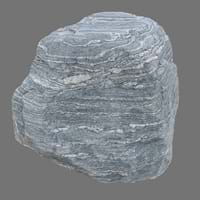Definition
Migmatite is typically a granitic rock within a metamorphic host rock which is composed of two intermingled but distinguishable components
Breccia is a rock consisting of angular fragments of stones which are cemented by finer calcareous material
Origin
Southern Alps, France
England
Discoverer
Jakob Sederholm
Unknown
Etymology
From the Greek word migma which means a mixture
From Italian, literally gravel, Germanic origin and related to break
Class
Metamorphic Rocks
Sedimentary Rocks
Sub-Class
Durable Rock, Medium Hardness Rock
Durable Rock, Hard Rock
Group
Not Applicable
Not Applicable
Other Categories
Coarse Grained Rock, Fine Grained Rock, Medium Grained Rock, Opaque Rock
Coarse Grained Rock, Medium Grained Rock, Opaque Rock
Texture
Foliated
Brecciated, Clastic
Color
Black, Bluish - Grey, Brown, Brown- Black, Dark Greenish - Grey, Dark Grey to Black
Beige, Black, Blue, Brown, Buff, Green, Grey, Orange, Pink, Purple, Red, Rust, White, Yellow
Durability
Durable
Durable
Scratch Resistant
Yes
Yes
Appearance
Dull, Banded and Foilated
Layered, Banded, Veined and Shiny
Interior Uses
Countertops, Flooring, Kitchens
Countertops, Decorative Aggregates, Entryways, Floor Tiles, Flooring, Homes, Hotels, Interior Decoration
Exterior Uses
As Building Stone, As Facing Stone
As Building Stone, As Facing Stone, Paving Stone, Garden Decoration, Office Buildings
Other Architectural Uses
Curbing
Curbing
Construction Industry
As Dimension Stone, Cement Manufacture, for Road Aggregate, Making natural cement
As Dimension Stone, Construction Aggregate, Landscaping, Roadstone
Medical Industry
Not Yet Used
Not Yet Used
Antiquity Uses
Artifacts
Artifacts, Sculpture
Commercial Uses
Cemetery Markers, Jewelry, Tombstones, Used to manufracture paperweights and bookends
Creating Artwork, Gemstone, Jewelry
Types
Diatexites and Metatexites
Collapse Breccia, Fault Breccia, Flow Breccia, Pyroclastic Breccia, Igneous Breccia and Impact Breccia
Features
Generally rough to touch, Is one of the oldest rock
Available in Lots of Colors and Patterns, Clasts are smooth to touch
Archaeological Significance
Monuments
Not Yet Used
Not Yet Used
Famous Monuments
Not Applicable
Not Applicable
Sculpture
Not Yet Used
Used
Famous Sculptures
Not Applicable
Data Not Available
Pictographs
Used
Not Used
Petroglyphs
Used
Not Used
Figurines
Not Yet Used
Used
Formation
Migmatites form by high temperature regional and thermal metamorphism of protolith rocks where rocks melt partially due to high temperature.
Breccia is a clastic sedimentary rock which is composed of broken fragments of minerals or rock which are cemented together by a fine-grained matrix and it forms where broken, angular fragments of rock or mineral debris accumulate.
Mineral Content
Biotite, Chlorite, Feldspar, Garnet, Graphite, Hornblade, Micas, Muscovite or Illite, Quartz, Quartzite, Silica, Zircon
Calcite, Clay, Feldspar, Phosphates, Quartz, Silica
Compound Content
Aluminium Oxide, NaCl, CaO, Carbon Dioxide, Iron(III) Oxide, FeO, Potassium Oxide, Magnesium Carbonate, MgO, MnO, Phosphorus Pentoxide, Silicon Dioxide, Titanium Dioxide
Aluminium Oxide, Ca, NaCl, CaO, Iron(III) Oxide, Potassium Oxide, Sodium Oxide, Silicon Dioxide, Titanium Dioxide
Types of Metamorphism
Burial Metamorphism, Cataclastic Metamorphism, Regional Metamorphism
Burial Metamorphism, Cataclastic Metamorphism
Types of Weathering
Biological Weathering, Chemical Weathering, Mechanical Weathering
Biological Weathering, Chemical Weathering, Mechanical Weathering
Types of Erosion
Chemical Erosion, Glacier Erosion, Water Erosion, Wind Erosion
Chemical Erosion
Grain Size
Medium to Fine Coarse Grained
Medium to Coarse Grained
Fracture
Irregular
Uneven
Porosity
Very Less Porous
Less Porous
Luster
Dull to Pearly to Subvitreous
Dull to Pearly
Cleavage
Poor
Non-Existent
Toughness
1.2
Not Available
Specific Gravity
2.65-2.75
2.86-2.87
Transparency
Opaque
Opaque
Density
Not Available
0 g/cm3
Resistance
Heat Resistant, Pressure Resistant
Heat Resistant, Impact Resistant, Pressure Resistant, Wear Resistant
Deposits in Eastern Continents
Asia
China, India, Iran, Iraq, Kazakhstan, Kyrgyzstan, Mongolia, Russia
China, India, Kazakhstan, Mongolia, Russia, South Korea, Uzbekistan
Africa
Cameroon, Ethiopia, Ghana, Kenya, Madagascar, Morocco, Mozambique, Namibia, Nigeria, Tanzania, Togo
Namibia, Nigeria, South Africa
Europe
Albania, Austria, Bosnia and Herzegovina, Finland, France, Georgia, Germany, Hungary, Italy, Kosovo, Monaco, Norway, Poland, Romania, Serbia, Slovakia, Slovenia, Sweden, Switzerland, Ukraine, United Kingdom
Austria, Denmark, Germany, Great Britain, Netherlands, Norway, Poland, Sweden, Switzerland, United Kingdom
Others
Not Yet Found
Greenland
Deposits in Western Continents
North America
Canada, Costa Rica, Cuba, Mexico, Panama, USA
Barbados, Canada, Mexico, Panama, USA
South America
Argentina, Bolivia, Brazil, Chile, Colombia, Ecuador, Peru, Venezuela
Brazil
Deposits in Oceania Continent
Australia
New South Wales, New Zealand, Queensland, Victoria
New South Wales, New Zealand
All about Migmatite and Breccia Properties
Know all about Migmatite and Breccia properties here. All properties of rocks are important as they define the type of rock and its application. Migmatite belongs to Metamorphic Rocks while Breccia belongs to Sedimentary Rocks.Texture of Migmatite is Foliated whereas that of Breccia is Brecciated, Clastic. Migmatite appears Dull, Banded and Foilated and Breccia appears Layered, Banded, Veined and Shiny. The luster of Migmatite is dull to pearly to subvitreous while that of Breccia is dull to pearly. Migmatite is available in black, bluish - grey, brown, brown- black, dark greenish - grey, dark grey to black colors whereas Breccia is available in beige, black, blue, brown, buff, green, grey, orange, pink, purple, red, rust, white, yellow colors. The commercial uses of Migmatite are cemetery markers, jewelry, tombstones, used to manufracture paperweights and bookends and that of Breccia are creating artwork, gemstone, jewelry.










